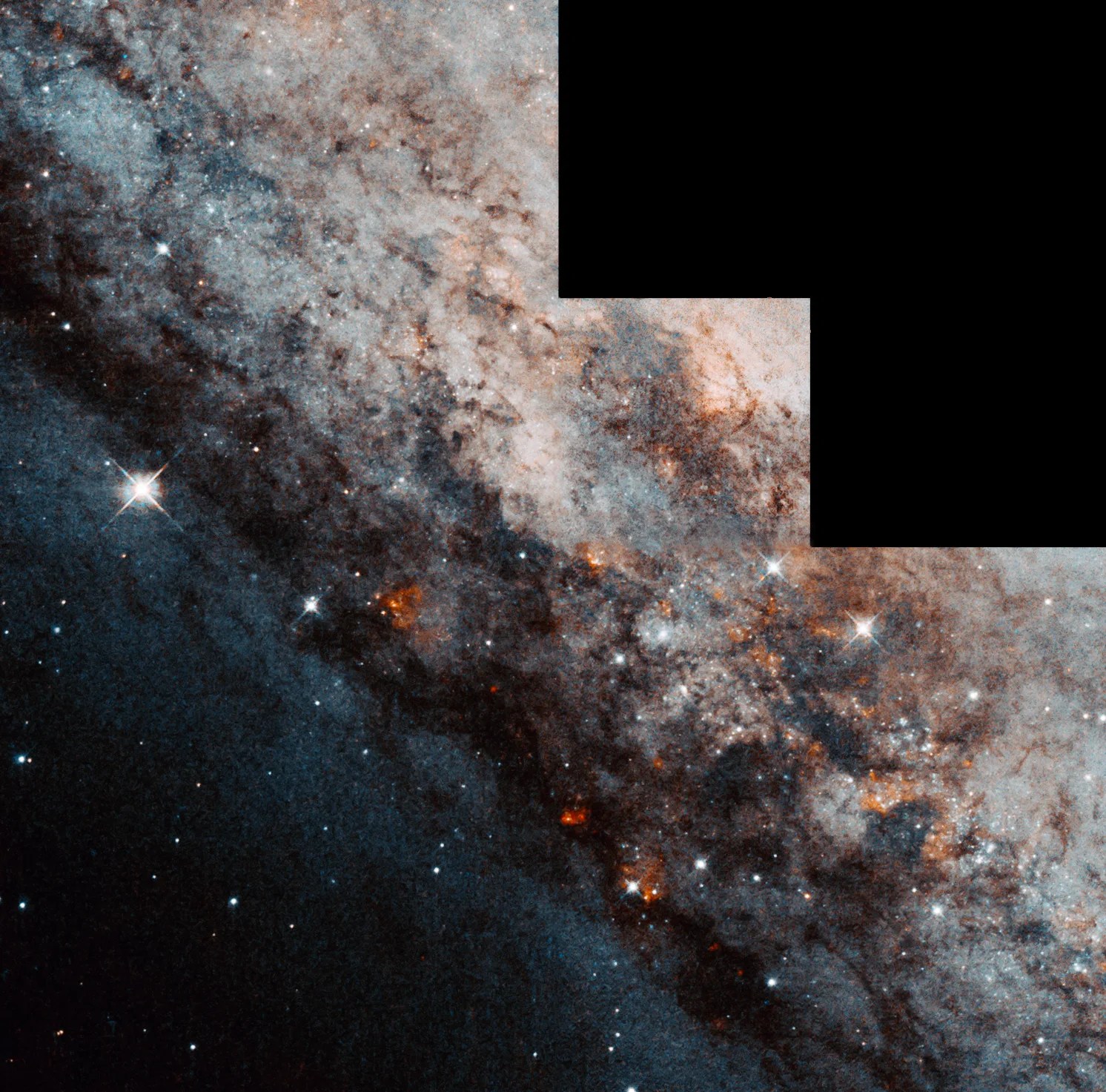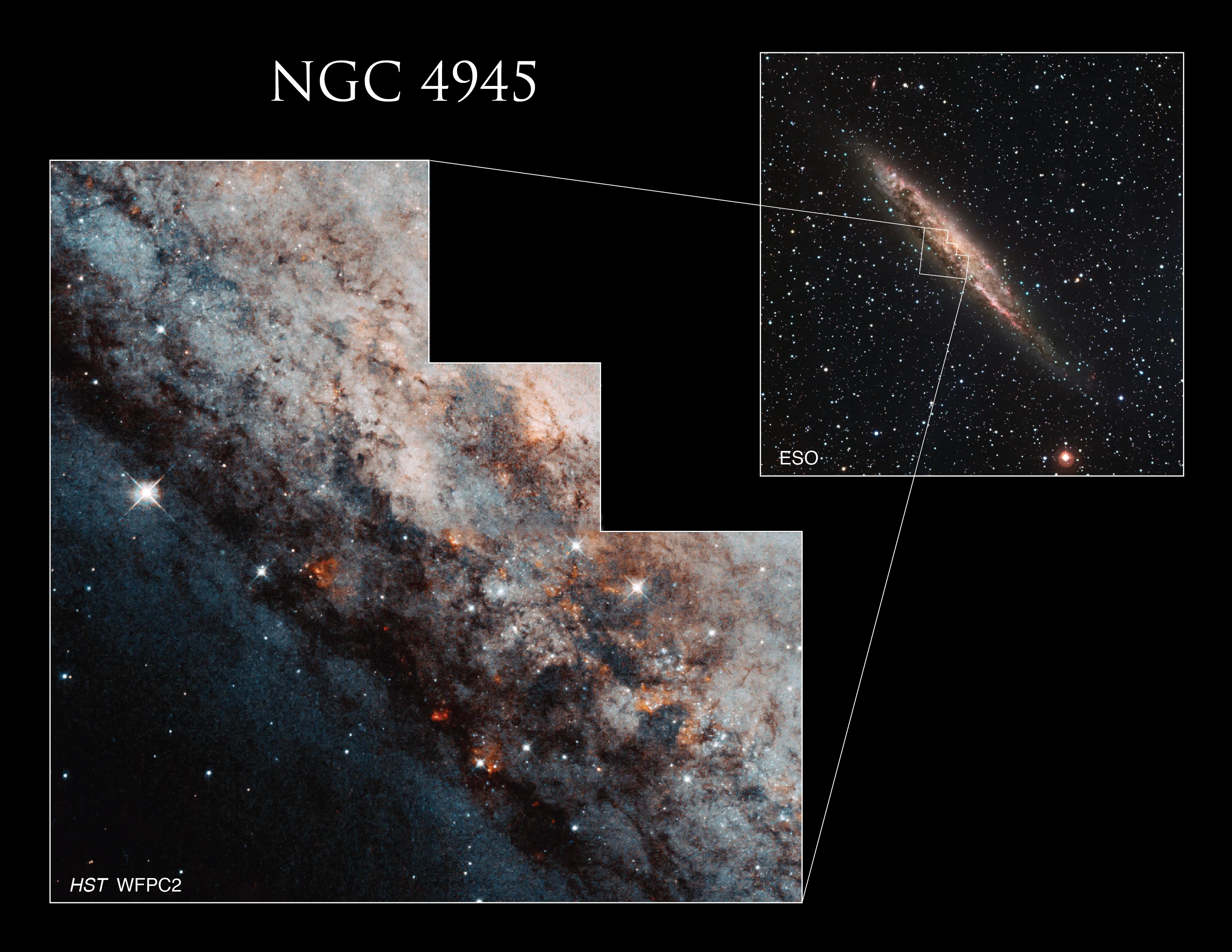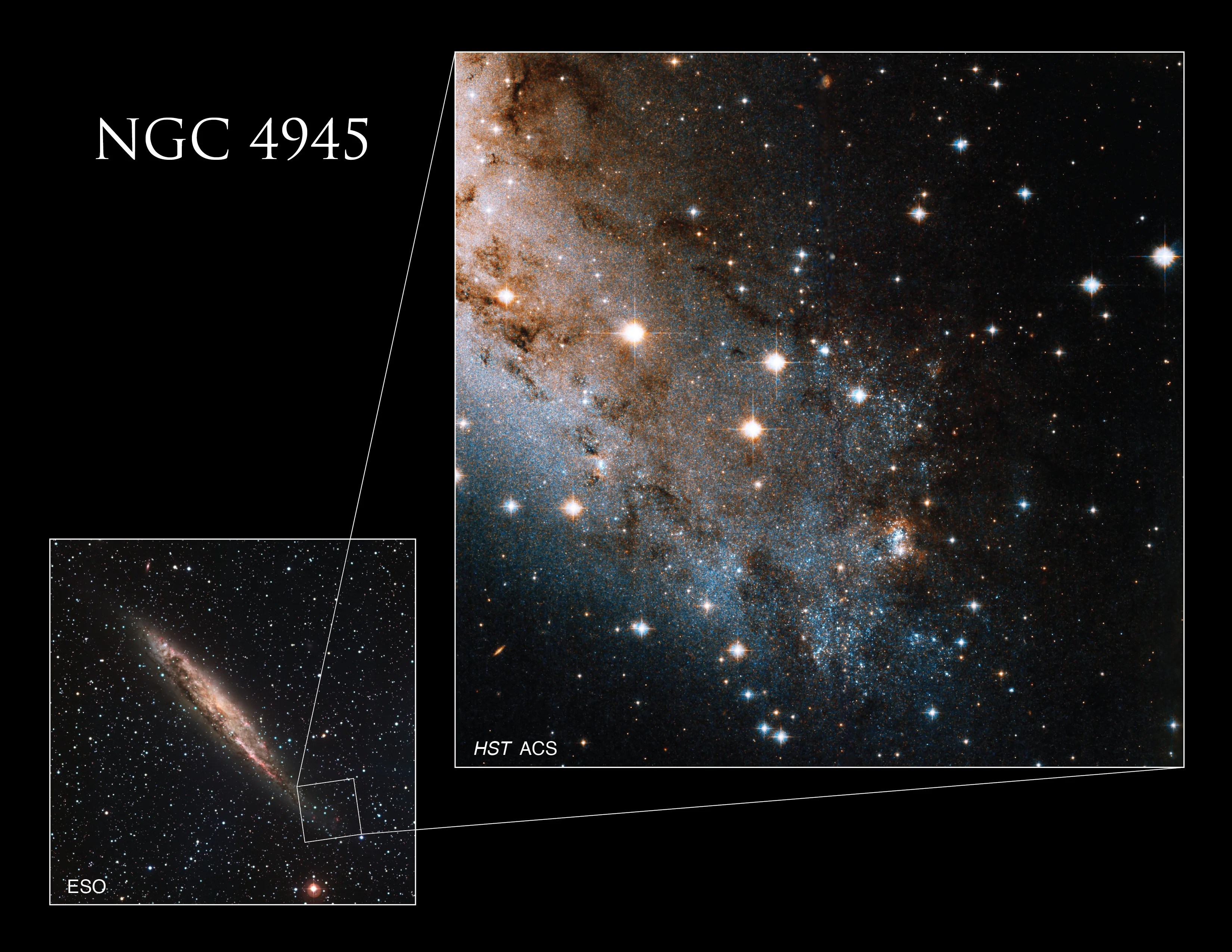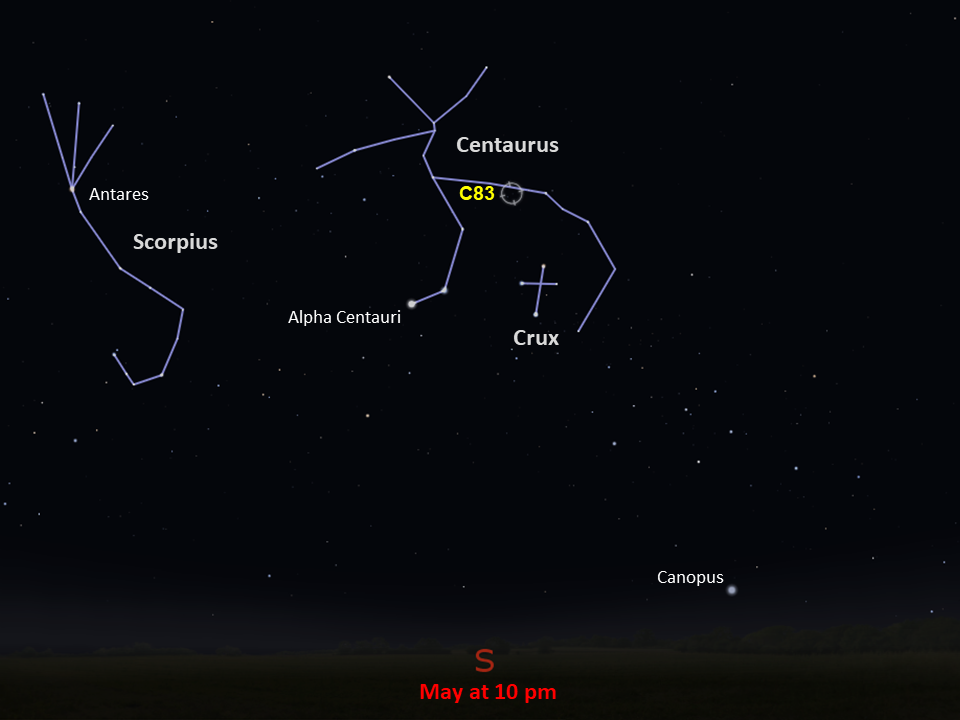Caldwell 83
Caldwell 83 is interesting to astronomers because it is the source of the first water megamaser.
Distance
12 million light-years
Apparent Magnitude
9.3
constellation
Centaurus
object type
Spiral Galaxy

Caldwell 83, or NGC 4945, is a barred spiral galaxy (like our Milky Way) that appears edge-on. This composite image of the galaxy’s center combines observations taken in visible and infrared light with Hubble’s Wide Field and Planetary Camera 2.
Caldwell 83 is interesting to astronomers because it is the source of the first water megamaser ever found. Masers produce amplified microwave radiation similar to lasers, which amplify visible light. This emission has been observed from a variety of molecular sources throughout the universe, including water molecules. Megamasers, like the water megamaser observed originating from Caldwell 83, are even brighter than regular masers — about 100 million times brighter. The Hubble observations used to construct this image were conducted to help astronomers better understand the environments of water megamasers.
Caldwell 83 was discovered from Australia by the Scottish astronomer James Dunlop in 1826. It is located roughly 12 million light-years from Earth in the constellation Centaurus. The galaxy has an apparent magnitude of 9.3 and can be seen with a small telescope in a dark sky. It will look like a thin, elongated patch of light brightening slightly toward the center, and appears near the small elliptical galaxy NGC 4976. The best time to observe Caldwell 83 is during autumn in the Southern Hemisphere, or during the late spring from southern latitudes in the Northern Hemisphere.



Glossary
Apparent Magnitude - The brightness of an astronomical object as seen from Earth, influenced by the object's distance from Earth, its absolute magnitude, and even gas and dust that lie between the object and Earth.
Elliptical Galaxy - A nearly featureless, spherical or football-shaped galaxy, typically lacking new star formation and often containing much older stars than those in spiral galaxies.
Spiral Galaxy - A galaxy characterized by its spiral structure, with star-filled arms that extend out from the center of the galaxy and host regions of star formation.
Explore Hubble's Caldwell Catalog
The following pages contain some of Hubble’s best images of Caldwell objects.

Caldwell 1
Also known as NGC 188, this group of stars formed from a large cloud of gas making the stars roughly…

Caldwell 2
This shell of gas is expanding outward, away from the dying star within.

Caldwell 3
This barred spiral galaxy was first spotted by British astronomer William Herschel in April 1793 in the constellation Draco.




